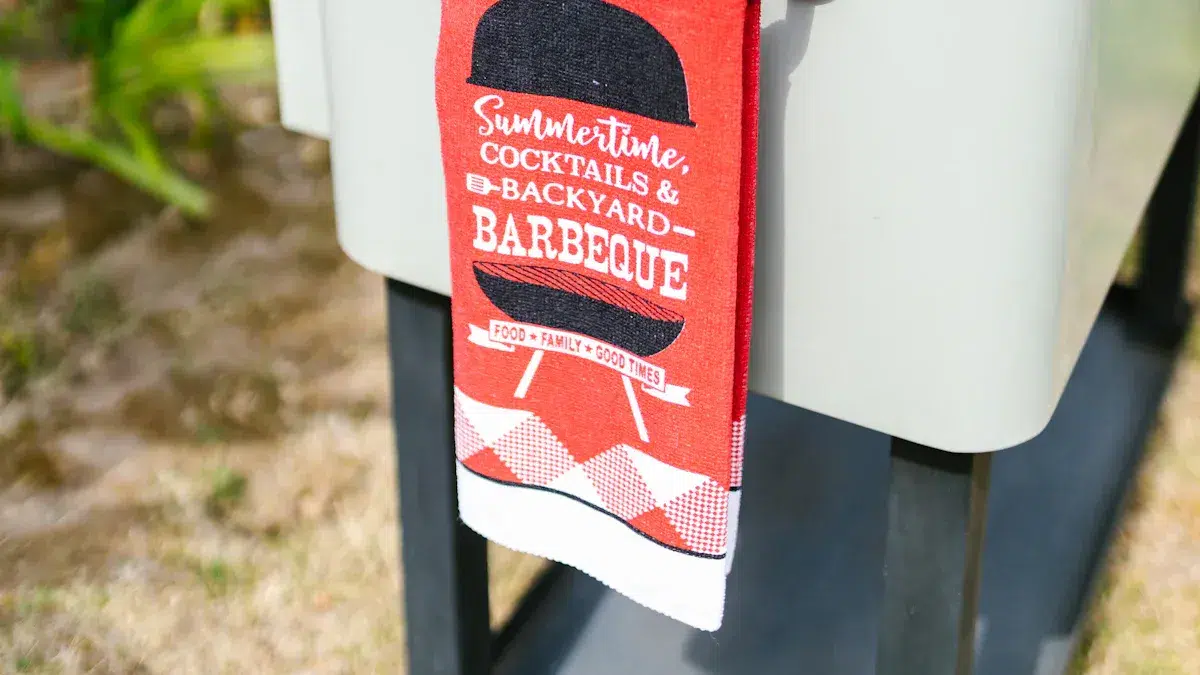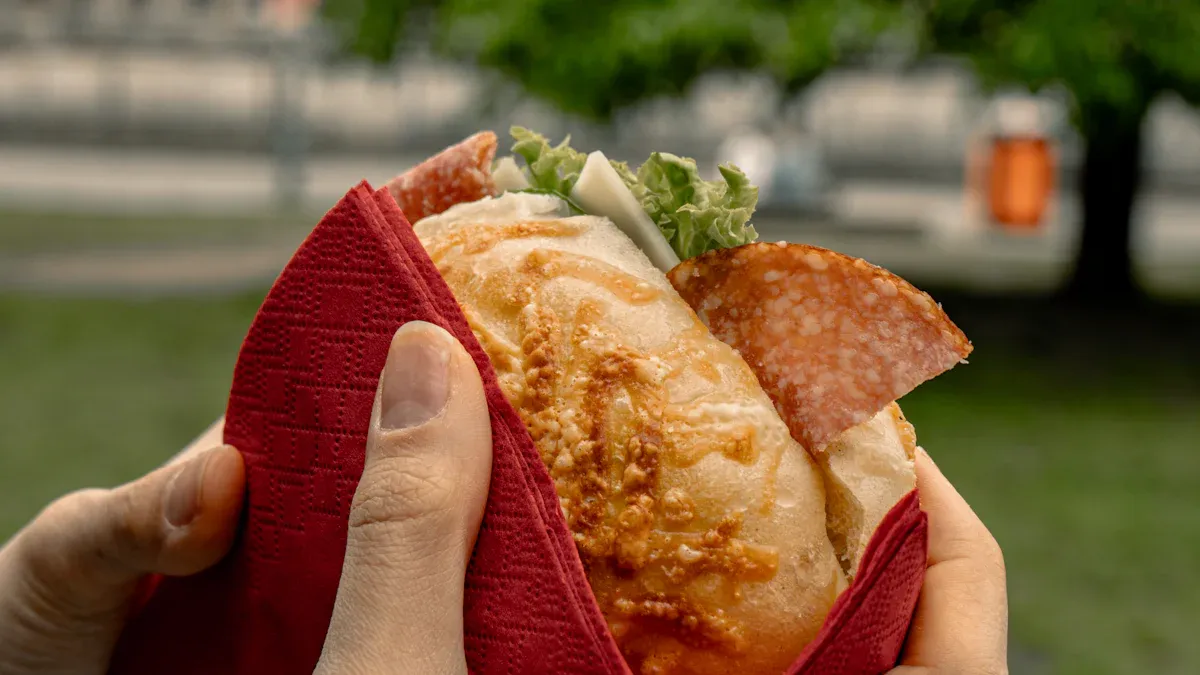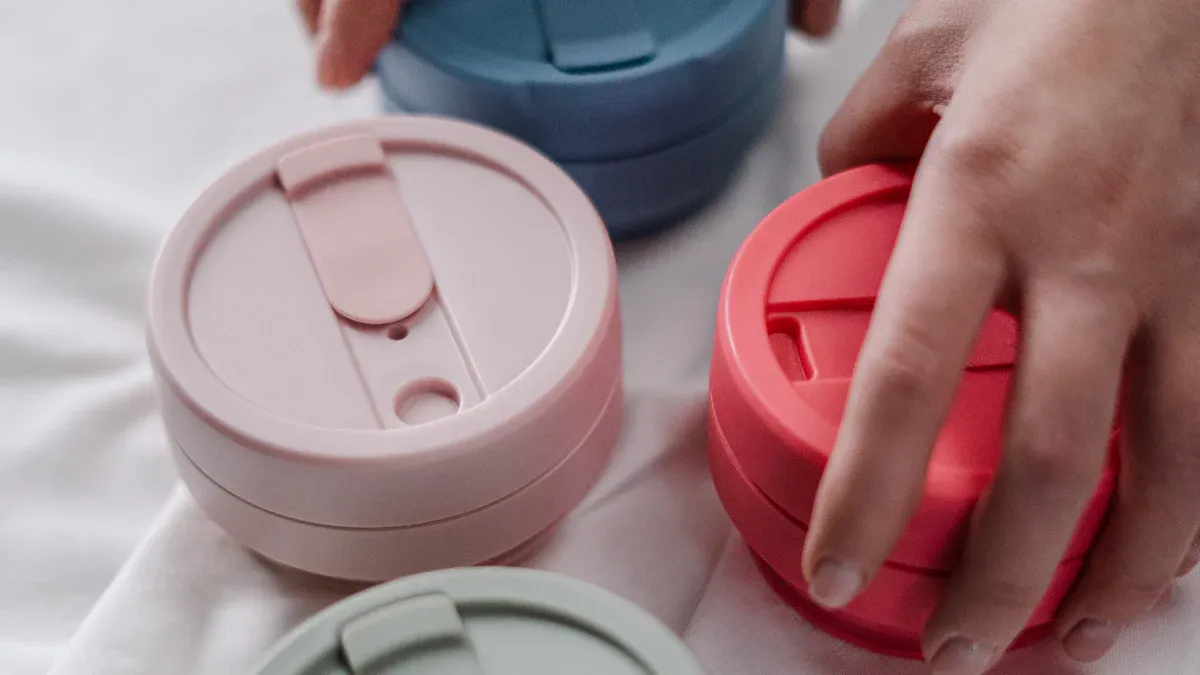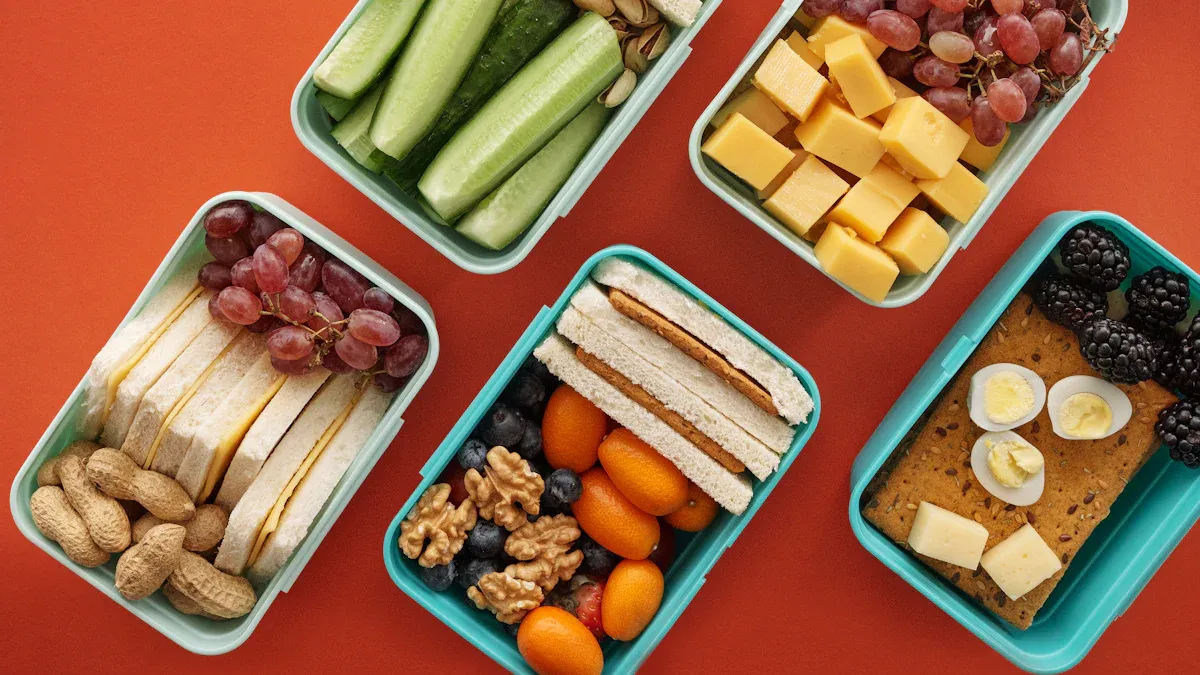

You want your hard shell lunch coolers to stay clean, fresh, and working like new. Regular cleaning with mild soap and water keeps them odor-free and safe for your food. Wiping down the inside and outside, rinsing well, and air drying help seals and insulation last longer. KUER’s experience makes these tips simple to follow.
Daily Cleaning

Quick Rinse
Start your cleaning routine with a quick rinse. Warm water works best for removing crumbs, sticky spots, and any leftover food. Just open your cooler, pour in some warm water, and swish it around. This step helps loosen dirt and makes the next steps easier. If you see any stubborn bits, use your hand or a soft brush to gently scrub them away. You do not need to use soap at this stage. Rinsing every day keeps your cooler fresh and ready for tomorrow’s lunch.
Tip: Always rinse your cooler as soon as you get home. This stops food from drying out and sticking to the inside.
Wipe Down
After rinsing, grab a soft cloth or sponge. Use mild soap and water to wipe down both the inside and outside of your cooler. Cleaning experts say soap and water work better than antibacterial sprays because they actually remove germs, dirt, and grime. Antibacterial sprays can kill germs, but they leave them behind on the surface. Soap and water lift everything away, leaving your cooler truly clean.
Pay special attention to the handles and corners. These spots collect the most germs. If you want extra protection, you can use a disinfecting wipe after washing. KUER coolers use tough materials that handle daily cleaning without damage. You can clean your cooler every day without worrying about wear and tear.
Note: Daily cleaning keeps your cooler safe for food and helps it last longer.
Stain Removal
Spot Clean
Sometimes, you find a stubborn stain inside your cooler. Maybe it’s from a spilled drink or a leaky sauce packet. Don’t worry. You can tackle these spots with a simple cleaning mix. Grab some hot water, a scoop of oxyclean, and a little unscented detergent. Mix them together in a small bowl. Dip a soft cloth or sponge into the solution. Gently rub the stained area. You’ll see the stain start to fade. For really tough spots, let the solution sit for five minutes before wiping it away.
Tip: Always test your cleaning mix on a small corner first. This helps you make sure it won’t damage the surface.
Safe Products
You want your cooler to last a long time. That means using the right tools and cleaners. Choose a gentle scrub brush or a soft sponge. These tools clean well but don’t scratch the hard plastic. Stay away from harsh chemicals like bleach or strong solvents. These can wear down the material and even leave behind smells that stick to your food.
- Use mild, unscented detergent for regular cleaning.
- Pick products labeled safe for food surfaces.
- Rinse well after cleaning to remove any leftover soap.
If you follow these steps, you keep your hard shell lunch coolers looking new and ready for every adventure.
Odor Control
Natural Absorbers
Nobody likes opening a cooler and getting hit with a bad smell. You can stop odors before they start by using natural odor absorbers. Some options work better than others. Take a look at this table to see how different odor absorbers perform in lab tests:
| Odor Absorber Type | Odor Transmission (%) | Best Use Cases |
|---|---|---|
| Standard Zip-Lock | 30–50 | Light snacks |
| Basic TPU Pouch | 15–25 | Gym clothes, lunches |
| Carbon-Lined Bag | 1–5 | Fish, onions, leftovers |
| Zeolite Combo Bag | <1 | Strong odors, ammonia |
You can see that carbon-lined bags and zeolite combo bags do the best job. If you pack things like fish or onions, drop a carbon-lined or zeolite pack inside your cooler. These packs soak up strong smells and keep your food fresh. You can even reuse them. Just heat the packs to reactivate them and they will work again.
Tip: Place a small open box of baking soda or a charcoal pack in your cooler overnight. Both options help absorb lingering smells.
Air Out
After you clean your cooler, let it air out. Open the lid and set the cooler in a dry spot. Fresh air helps remove any leftover moisture and odors. If you store your cooler right after cleaning, you might trap smells inside. Airing out your cooler keeps it smelling clean and ready for your next meal.
Note: Make airing out your cooler a habit. It only takes a few minutes and makes a big difference.
Drying
Air Dry
After you finish cleaning, let your cooler air dry completely. Set it in a spot with good airflow. Open the lid wide so every part gets fresh air. You want to make sure the inside, outside, and any foam padding or fabric linings feel totally dry to the touch. Sometimes, drying takes just a few hours. Other times, it might take overnight, especially if the weather is humid or if your cooler has thick insulation.
Tip: Never rush this step. If you store your cooler while it’s still damp, you invite mold and mildew to grow.
You can speed up drying by placing the cooler near a fan or in a breezy area. Just avoid direct sunlight, as strong sun can fade colors or damage the plastic over time.
Prevent Mold
Mold loves moisture. If you leave even a little dampness inside your cooler, mold can start to grow. That’s why you should always check for hidden wet spots, especially in corners or under seals. Run your hand along the inside to feel for any leftover moisture.
Here’s a simple checklist to help you prevent mold:
- Open the cooler fully after washing.
- Place it in a well-ventilated area.
- Wait until every part feels dry—this could take several hours or overnight.
- Double-check foam or fabric areas.
- Only close and store the cooler when you’re sure it’s bone dry.
Remember: A dry cooler stays fresh and ready for your next adventure!
Storage

Ventilated Space
You want your hard shell lunch coolers to stay fresh and ready for use. The best way to do this is by storing them in a dry, ventilated space. A cool, dry spot in your kitchen or pantry works well. Avoid damp basements or garages, since moisture can sneak in and cause problems. When you pick a storage spot, make sure air can move around the cooler. This helps prevent mold and keeps odors away.
- Clean your cooler after every use with mild soap and warm water.
- Dry it completely before putting it away.
- Store it in a place where air flows freely.
- Keep it out of direct sunlight to protect the plastic.
Tip: If you ever notice a musty smell, place a small box of baking soda inside overnight. This trick helps absorb any leftover odors.
Open vs. Closed
You might wonder if you should close the lid tight or leave it open. Always leave the lid slightly open when you store your cooler. This simple step lets air circulate inside and stops moisture from building up. If you close the lid all the way, trapped moisture can lead to mold or bad smells.
- Leave the lid propped open a little.
- Remove any magnets from the lid and store them separately in a dry place.
- Check the inside before your next use to make sure it smells fresh.
By following these steps, you keep your hard shell lunch coolers in top shape and ready for your next adventure.
Care for Hard Shell Lunch Coolers
Handle Gently
You want your hard shell lunch coolers to last for years. Treat them with care every time you use them. Avoid dropping or tossing your cooler, even if it feels tough. Impacts can crack the shell or damage the hinges. When you carry your cooler, use both hands and set it down gently. Overloading your cooler can also put stress on the seams and handles, which may lead to breaks or leaks.
Here are some simple ways to handle your cooler with care:
- Always lift with both hands, especially when it’s full.
- Never throw or drop your cooler, even from a short height.
- Avoid sitting or standing on the lid.
- Don’t overload it with heavy items.
KUER designs coolers with reinforced hinges and thick walls. These features help your cooler stand up to rough use, but gentle handling keeps it looking and working like new.
Protect Seals
The seals on your cooler keep food cold and fresh. Airtight gasket-sealed lids stop warm air from getting in and water from leaking out. If you want your cooler to stay waterproof and keep ice longer, you need to protect these seals.
Follow these tips to keep seals in top shape:
- Wipe seals clean after every use.
- Check for crumbs or dirt that might break the seal.
- Never use sharp tools near the gasket.
- Store your cooler with the lid slightly open to prevent the seal from sticking.
KUER’s quality control ensures every cooler has strong, leak-proof seals and heavy-duty hinges. These features, along with your careful use, help your hard shell lunch coolers last through every adventure.
Deep Cleaning
Monthly Routine
You want your cooler to stay safe and fresh for every meal. A deep clean once a month makes a big difference. Food safety guidelines recommend cleaning coolers weekly or as needed, so a monthly deep clean is the minimum you should aim for. If you use your cooler often, you might want to clean it more frequently.
Here’s a simple routine you can follow:
- Rinse the cooler with warm water to remove crumbs and loose dirt.
- Wash all surfaces with mild detergent and warm water. Use a soft sponge or cloth.
- Rinse again to get rid of any soap left behind.
- Dry the cooler completely before moving on.
Tip: Clean up spills right away. This stops stains and keeps your cooler smelling fresh.
Disinfect
After cleaning, you need to disinfect your cooler to keep it safe for food. Use a food-safe sanitizer like Sani-Tyze, ZZZ Disinfectant, or a ready-to-use food grade sanitizer. These products work well on surfaces that touch food and do not need a final rinse if you follow the instructions.
Follow these steps to disinfect:
- Spray or wipe the sanitizer on all inside surfaces.
- Let it sit for at least one minute.
- Allow the cooler to air dry.
If you use your cooler for raw meat, eggs, or seafood, always disinfect after each use. This helps prevent bacteria and cross-contamination. Store your cooler in a clean, dry place when you finish.
Keeping up with deep cleaning and disinfecting helps your cooler last longer and keeps your food safe.
You keep your hard shell lunch coolers fresh and long-lasting when you follow these seven tips. Regular care helps you avoid problems that could void your warranty, like misuse or storing in damp places.
- Skipping maintenance can lead to issues not covered by warranty.
- Unauthorized repairs or rough handling may also void coverage.
Trust KUER’s quality and make these habits part of your routine for the best results.
FAQ
How often should you deep clean your hard shell lunch cooler?
You should deep clean your cooler once a month. If you use it daily or for raw foods, clean it more often for best results.
Can you put your hard shell lunch cooler in the dishwasher?
No, you should not put your cooler in the dishwasher. Hand wash with mild soap and warm water to protect the seals and shell.
What should you do if your cooler develops a strong odor?
- Sprinkle baking soda inside.
- Let it sit overnight with the lid open.
- Rinse and air dry the next day.
This removes most odors quickly.




